La Deuxième Semaine
My second week in France has come to an end. While this week was also filled with hours of orientation and registration for classes, we also took some time to explore Strasbourg’s city center and toured some governmental institutions. Each day I’m getting more accustomed to the idea of living in France.
I love having the opportunity to live at the Château de Pourtalès. Yeah, it’s obviously stunning, and I get to say that I live in a castle in France. But it’s also a place rich in history that is wholeheartedly dedicated to the pursuit of knowledge and multi-cultural learning. Since it was built in 1750, the Château has seen peace and prosperity, beauty and aristocracy, prodigy and higher learning.
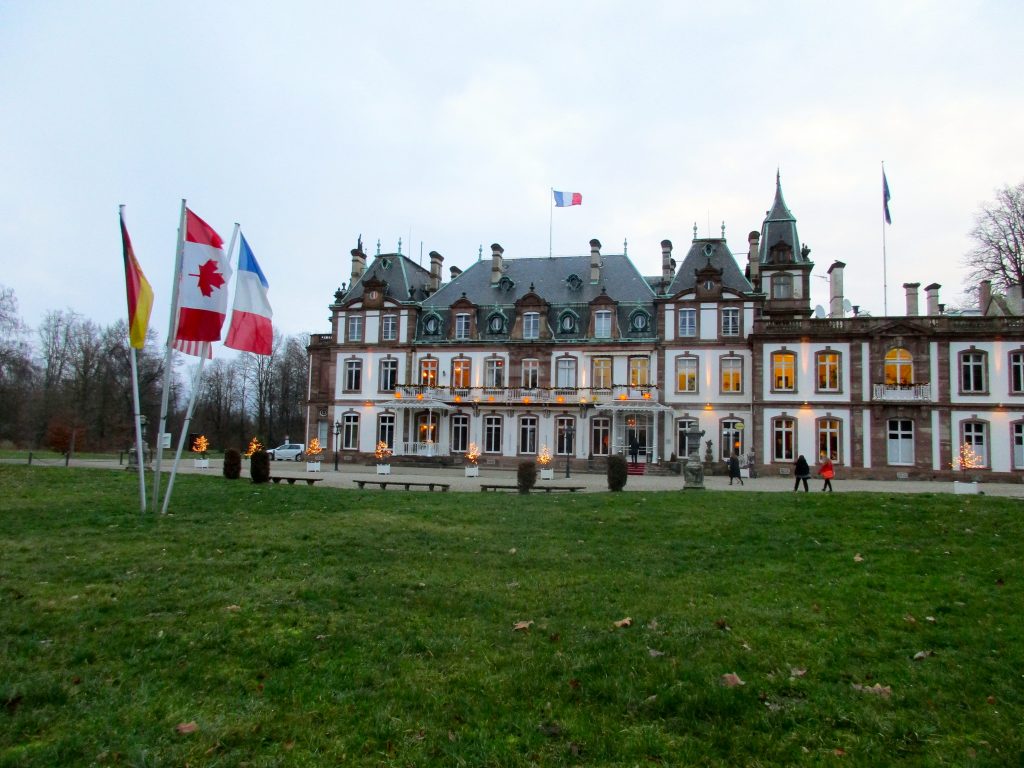
It has persevered through several wars, suffering fire damage during the French-German War in 1870, and serving its duty as an army hospital during that same conflict. The two World Wars were also difficult, for it was held by the Germans in WWI as “enemy property”. Private owners closed the Château in 1939 without plans to reopen. During WWII, it was confiscated and forced to house high-ranking German officers, then occupied by Allied Forces for a short period following the war.
After the end of WWII, the Château began to decline and eventually fell into utter despair. It spent many years in such disrepair it was scheduled for demolition by the City of Strasbourg.
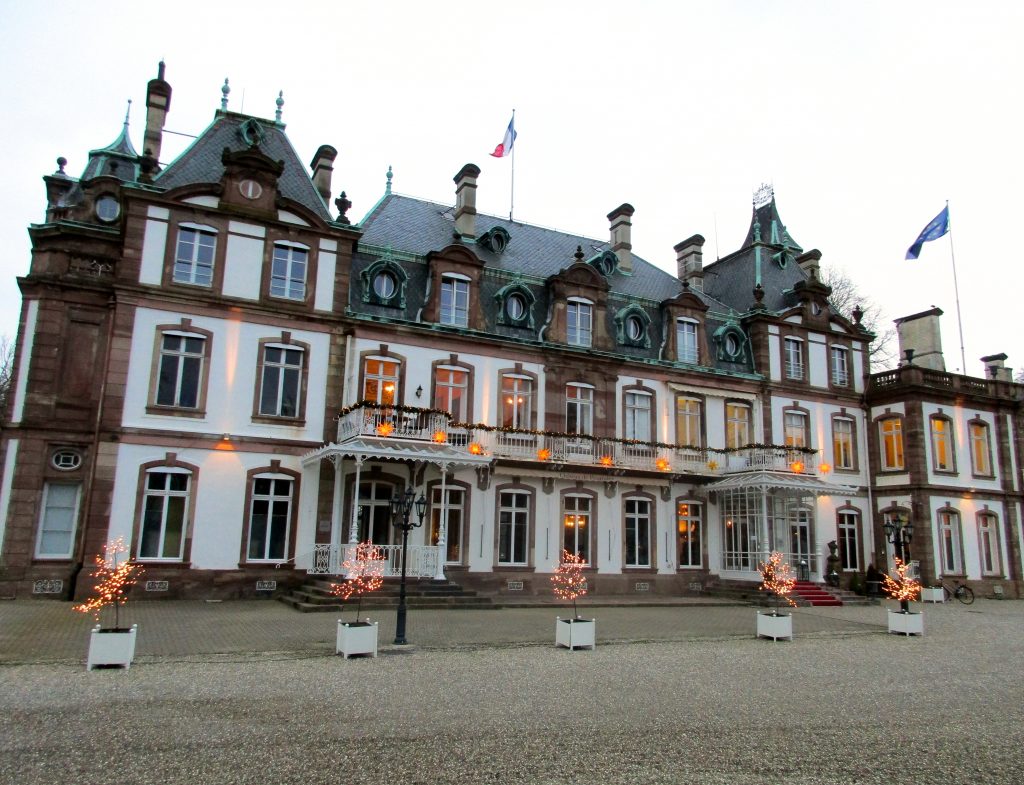
Just in time, the Château was purchased in 1972 by Dr. Walter Leibrecht, founder of Schiller International University and a pioneer in higher education and study-abroad learning. Dr. Leibrecht and his family literally rescued the Château from its ultimate demise, granting it a new mission when he appointed it home to the Strasbourg campus of his beloved Schiller International University. The Château is now used as a CEPA Study Center for their EU Studies Program, which is the program I am now participating in through Georgia State University.
Some former residents of the Château swear that the place is haunted by the ghost of Mélanie Pourtalès, the Château’s namesake. Daughter of the Viscount and wife to Count Edmond de Pourtalès, Countess Mélanie was exceedingly beautiful and had a reputation for peerless grace. She elevated her social standing to its pinnacle when she became a member of Empress Eugenie’s Paris Imperial Court and subsequently associated with many distinguished intellectuals and artists of her time. Renowned for garden parties and receptions she frequently hosted, Countess Mélanie gathered Europe’s most notable elite and nobility at the Château de Pourtalès for intellectual and cultural exchange. The idea of Mélanie still watching over the Château doesn’t seem like such a bad thing. She seems like she would be more of a benevolent spirit friend than a haunted lingering soul. Maybe she would teach me piano or how to arrange cheese plates.
As part of the EU Studies Program, we tour all of the governmental institutions that call Strasbourg their home including the Council of Europe, the European Parliament, and the European Court of Human Rights. We toured the Council of Europe our first week in Strasbourg, and this week we toured the remaining two.
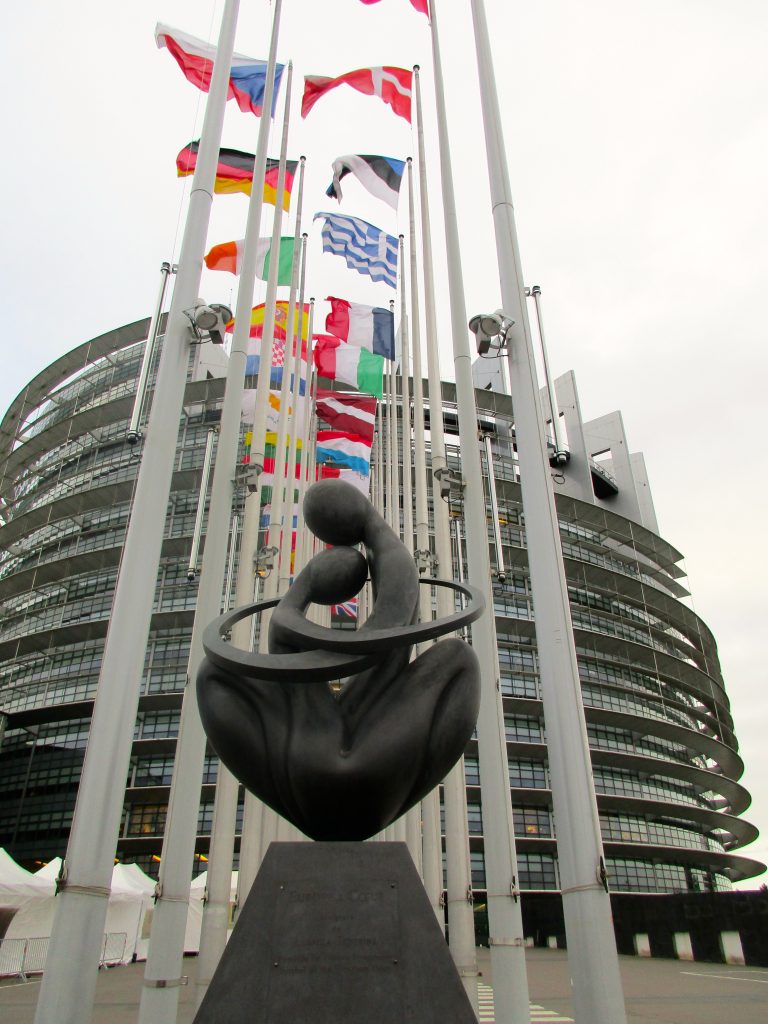
We started on Wednesday with the European Parliament. Strasbourg is the official seat of the European Parliament and the institution is legally bound to meet here for twelve sessions a year lasting about four days each. All votes of the European Parliament must take place in Strasbourg. Other work takes place in Brussels and Luxembourg City and although de facto a majority of the Parliament’s work is now geared to its Brussels site, it is legally bound to keep Strasbourg as its official home.

The building in which the European Parliament is housed is modern, grand, and full of symbolism (for example, the thousands of windows that make up the exterior of the building are meant to symbolize transparency). The building is named for Louis Weiss, a French Member of Parliament.
Weiss was an author, journalist, feminist and politician. Growing up she was trained as a teacher against the will of her family, was a teacher at a secondary school for arts and awarded a degree from Oxford University. From 1914 to 1918, she worked as a war nurse and founded a hospital in the Côtes-du-Nord. From 1918 to 1934, she was the publisher of the magazine, L’Europe nouvelle. From 1935 to the beginning of World War II, she committed herself to women’s suffrage. In 1936, she stood for French parliamentary elections, running in the Fifth arrondissement of Paris. During the War, she was active in the French Resistance. She was a member of the Patriam Recuperare network, and she was chief editor of the secret magazine, “Nouvelle République” from 1942 until 1944. In 1945, she founded the Institute for Polemology (research on war and conflict) together with Gaston Bouthoul in London. She traveled around the Middle East, Japan, China, Vietnam, Africa, Kenya, Madagascar, Alaska, India, etc., made documentary films and wrote accounts of her travels. In 1979, she became a Member of the European Parliament.
Weiss was a truly incredible woman, and it’s inspiring that France recognized her brilliance and named the entire building after her. I don’t think they would ever name such an important government building after a woman (much less a… feminist) in America. Feminists don’t even wear bras! And the entire movement is detrimental to society and mankind because the sexes should be equal, right? (#NotAllMen)
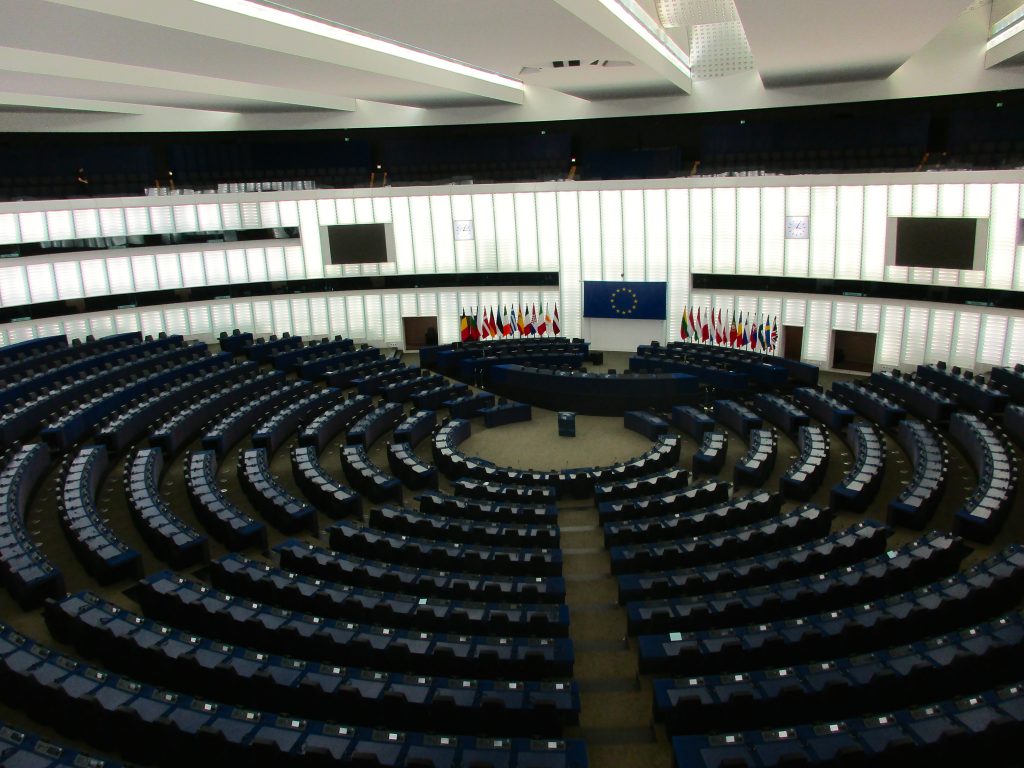
On Thursday we visited the European Court of Human Rights, an international court set up in 1959. It rules on individual or state applications alleging violations of the civil and political rights set out in the European Convention on Human Rights. Since 1998 it has sat as a full-time court and individuals can apply to it directly.
We spoke with a lawyer who works for the court, and she detailed the intricacies of her job and the duties of the court. She also discussed with us some of the most pivotal modern-day cases on topics such as abortion, the death penalty, freedom of religion and religious symbols, assisted-suicide, torture, military abuses and the treatment of refugees.
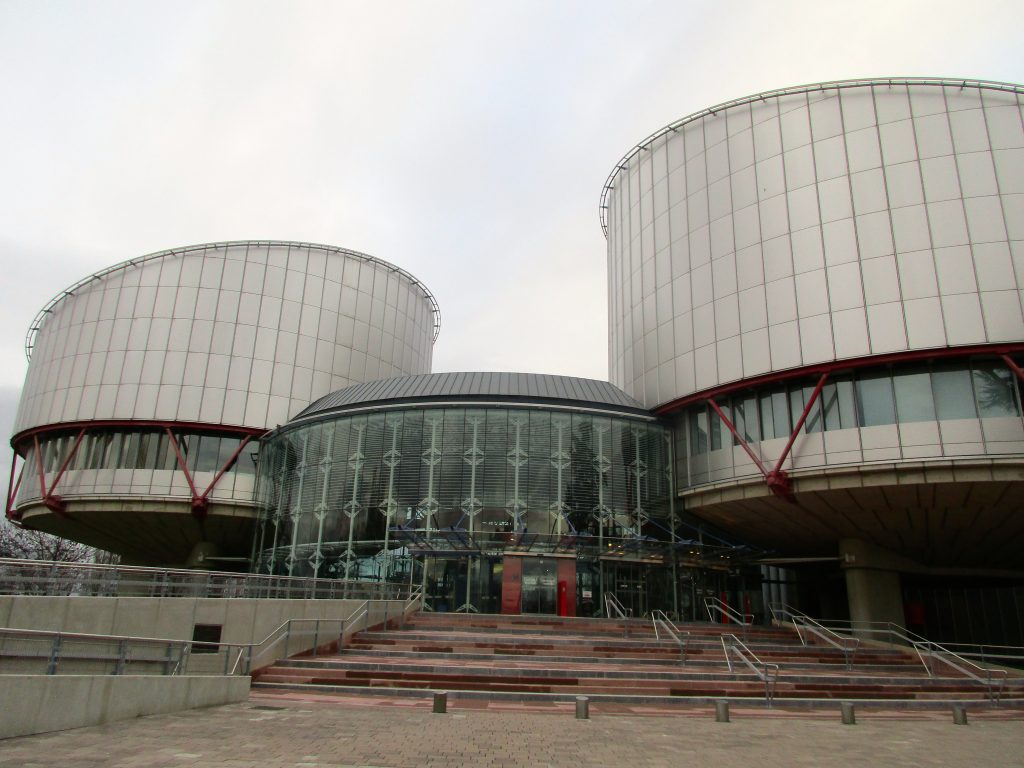
The topic of the death penalty is a huge issue here in Europe. A citizen’s right to life is fiercely protected by all institutions, and many look down upon the United States for allowing such practices to persist (some even believe that our status as an observer state of the European Council should be revoked for this reason). I find this interesting, as it is a topic that I have never had any particularly strong feelings about. I’ve always viewed the death penalty in America as the status quo, but now realize that it is a topic worth researching. On a similar note, in the case of abortions, the court has ruled that the life of the mother overrules the life of the child and women’s body sovereignty is protected.
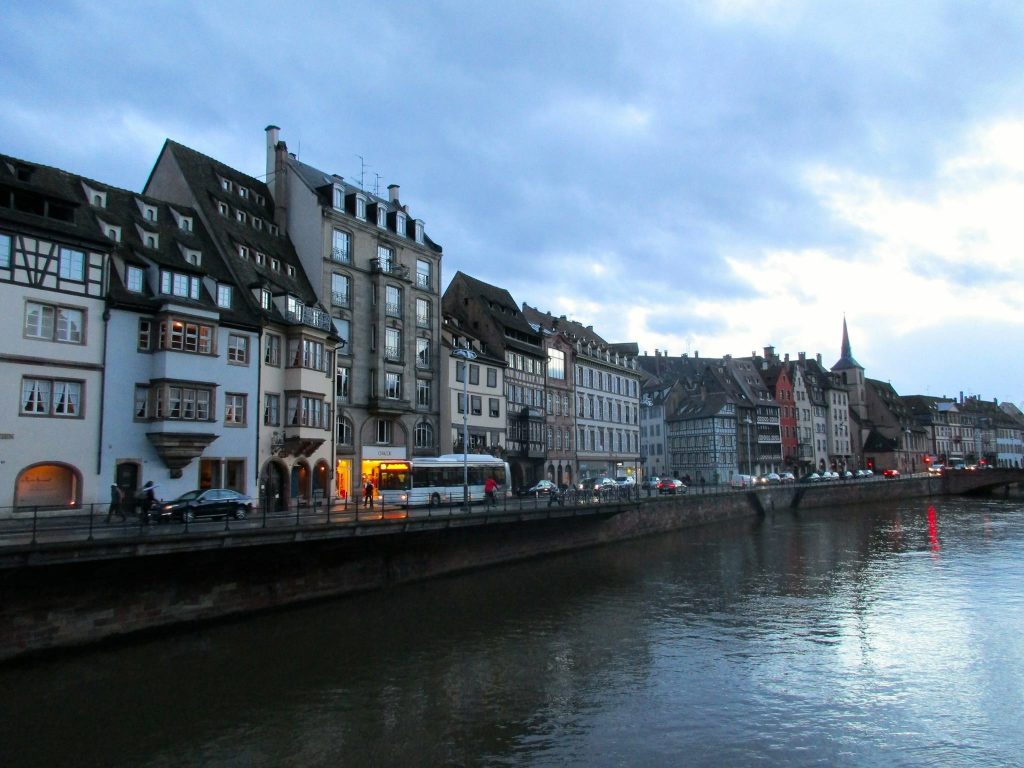
Throughout the week we have also taken more time to get to know our city. It rains here. A lot. I used to think that Florida was soggy, but it has absolutely nothing on Strasbourg. I’ve been living in Rainesville for nearly three years, and I spend my summers in Brevard, a town that receives so much precipitation that it is literally classified as a rainforest and I just now purchased my first pair of rain boots. The situation is dire.
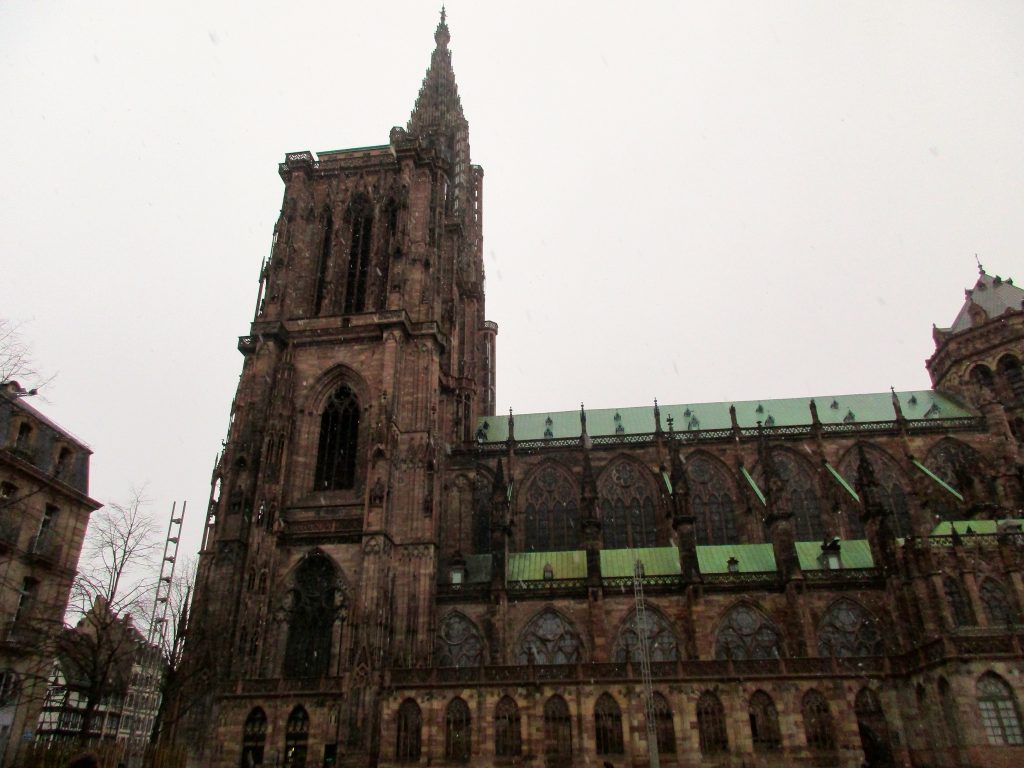
Luckily for a deprived Floridian, lots of rain means lots of snow. I had seen it snow all of two times in my life before coming here, and now that number has doubled within the last two days. Snow is magical but significantly colder than anticipated. And also less fluffy. But that’s okay! Because walking through the streets with hot chocolate in hand while it’s snowing in this fairy tale city is really incredible. Snow is weird, but I have a whole lot of it to catch up on, and I can’t wait until it starts to actually stick to the ground and coat the city in a blanket of white.
On Saturday we had a guided walking tour of Strasbourg. I learned so many new things about the places I had been passing by everyday for the past two weeks! For instance, the Strasbourg Cathedral at 142 meters was the world’s tallest building from 1647 to 1874 (227 years). It’s a shame that I can’t get any good pictures of the inside of the cathedral, all of the original stained glass is still intact and incredibly beautiful, as is the Gothic architecture.
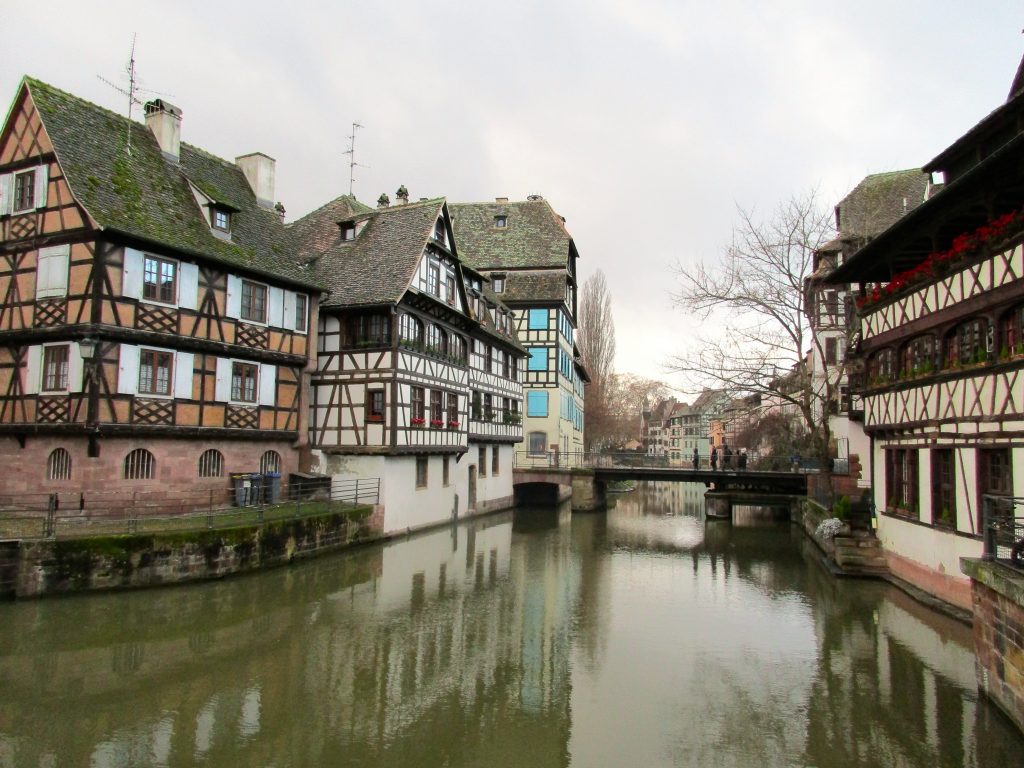
I also had a chance to visit Petite France for the first time, which is a lovely area even though the weather was not particularly kind to us and made for terrible pictures. Interestingly enough, the name Petite France comes from the “hospice of the syphilitic” which was built in the late fifteenth century on this island, to cure persons with syphilis, then called Franzosenkrankheit or “the French disease” in German. Imagine if they had named the area “Little Syphilis.” I think it would have detracted significantly from the neighborhood’s charm.
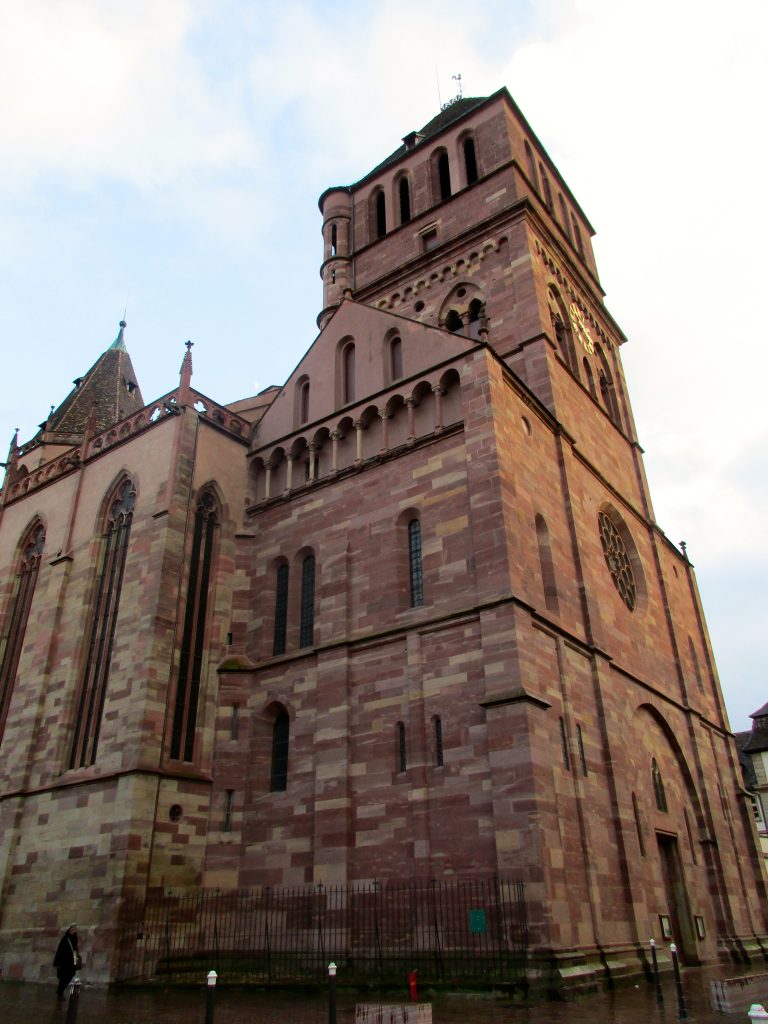
We visited the Place Saint-Thomas where the Eglise Luthérienne Saint Thomas is located. The church is a historical building in Strasbourg and it is the main Lutheran church of the city since the Cathedral became Catholic again after the annexation of the town by France in 1681. The church is internationally renowned for its historic and musically-significant organs. Most notable is the 1741 Silbermann organ, played by Wolfgang Amadeus Mozart. The French organist Louis Thiry also recorded the Art of fugue by Johann Sebastian Bach on this organ.
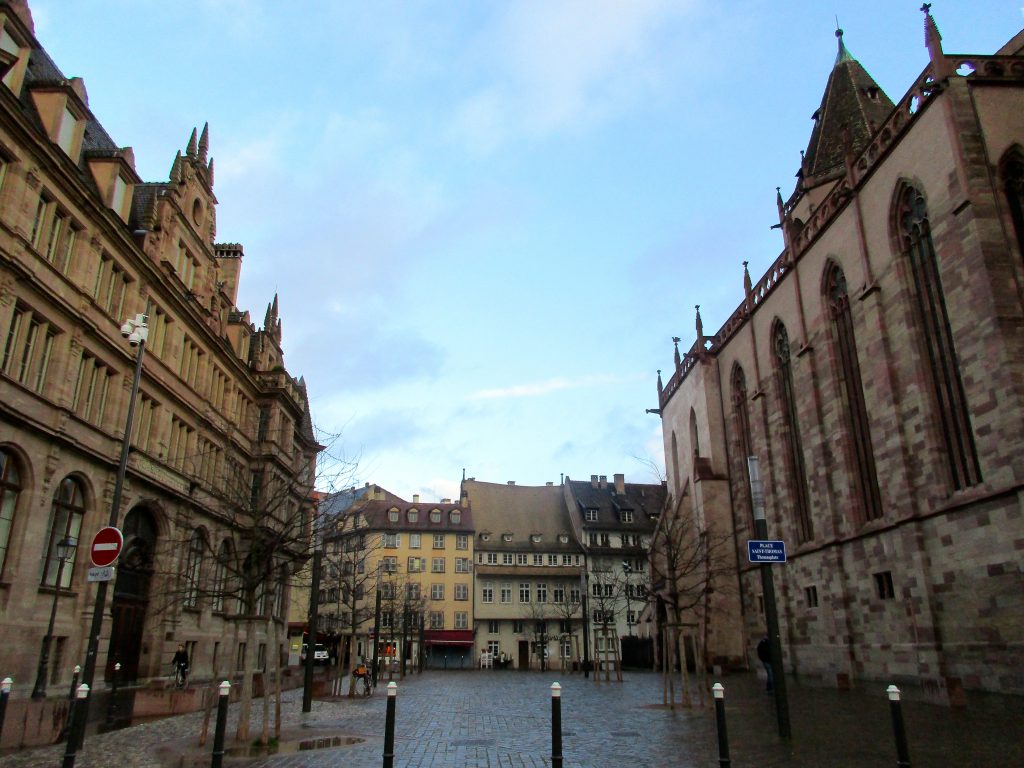
After our walking tour on Saturday, we all sat down for a traditional Alsatian meal at a restaurant near the Cathedral. The most traditional dish of the area seems to be the tarte flambée, which is bread dough rolled out very thin in the shape of a rectangle or circle, which is covered with fromage blanc or crème fraîche, thinly sliced onions and bacon. It’s a little like the region’s take on pizza and is incredible.
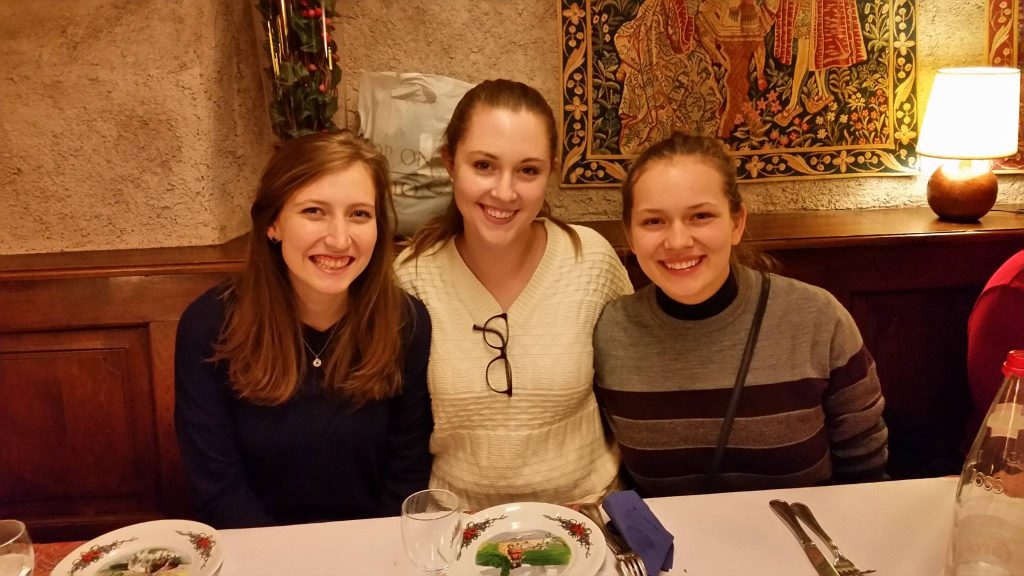
On Sunday we continued with our second French lesson at the Château. Our teacher is quite eccentric and speaks to us only in French, but I think the few hours we spent with her were helpful. I’m going to try to pick up a couple of copies of classic English books translated to French (ie Harry Potter) so that I can work on expanding my vocabulary a little.
Classes start this upcoming week, and I’m looking forward to having a weekly routine. I’ll be going to Slovenia next weekend with a trip through the University, which should be incredible, and a trip to Munich and Salzburg for the last weekend of January is in the works. I feel like I have an obligation to travel everywhere, since so many beautiful countries and cities are a short bus ride away, and the rates are fantastic. Luckily I think everyone on the program is on the same page, we all want to get as much out of this semester as possible.
Well, with that I’m off to shop the sales in town. Apparently nearly every shop in the entire city has sales the first few weeks of January to get rid of their winter collection and make room for spring. Works for me. I’ll have to pick up some school supplies and a big bag because apparently the French don’t wear backpacks to class. Too trendy. Not like I don’t already stick out like a sore thumb… (although a hostess at a café did ask if I was German, so perhaps I’m assimilating more quickly than I anticipated).
A la semaine prochaine!
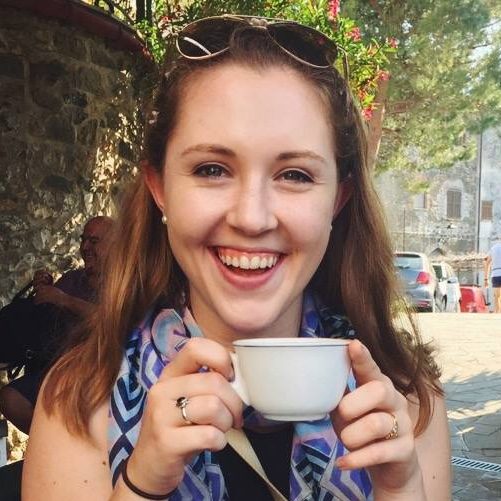
Rachel is a Strasbourg alumna, dog mom, and bona fide politico. While on study abroad, she wrote for the University of Florida “Global Gators” blog and later served as an On-Campus Ambassador for the CEPA Foundation. She has since completed her Bachelor with a double major in Political Science and Economics at UF and now works in DC as a Staff Assistant in the US House of Representatives.